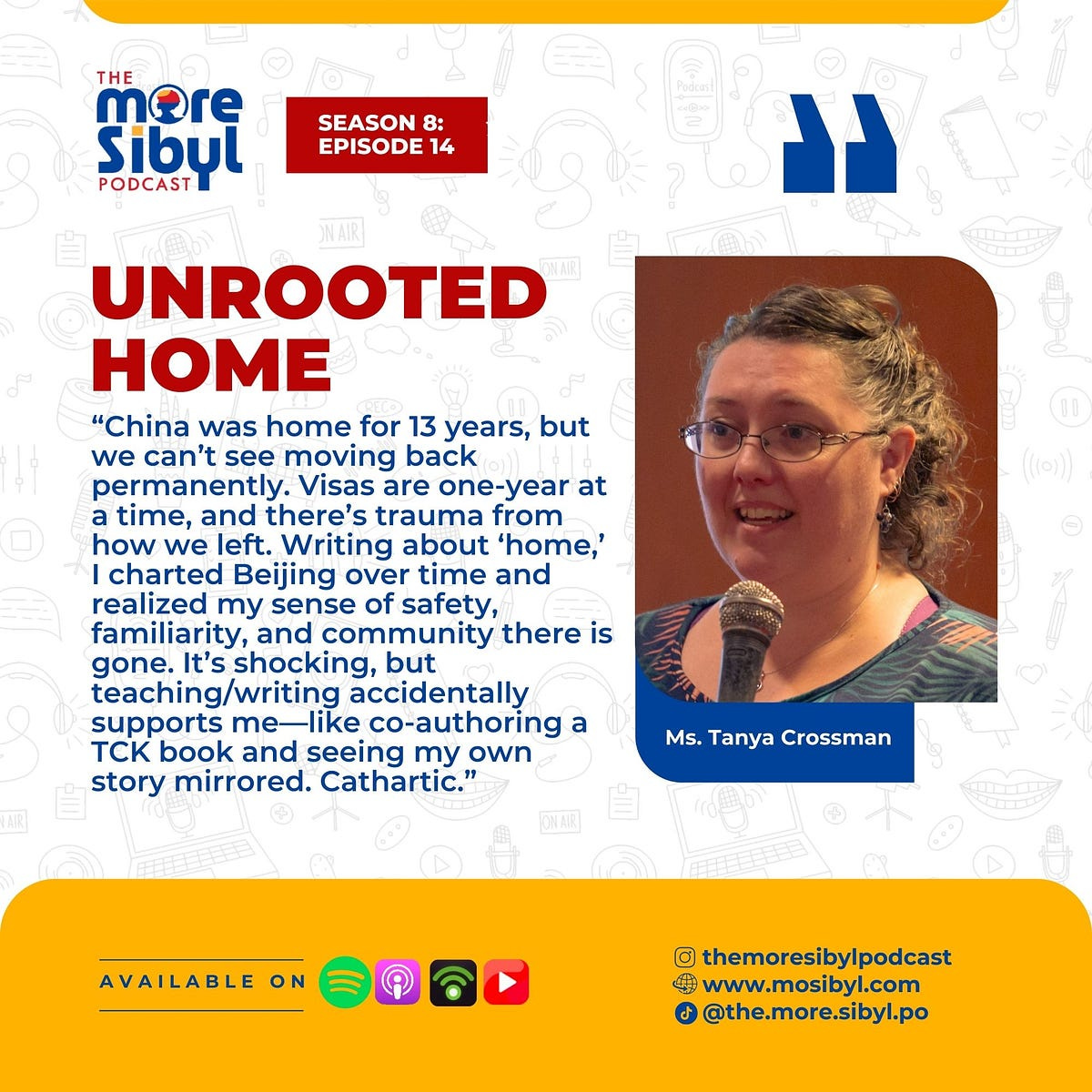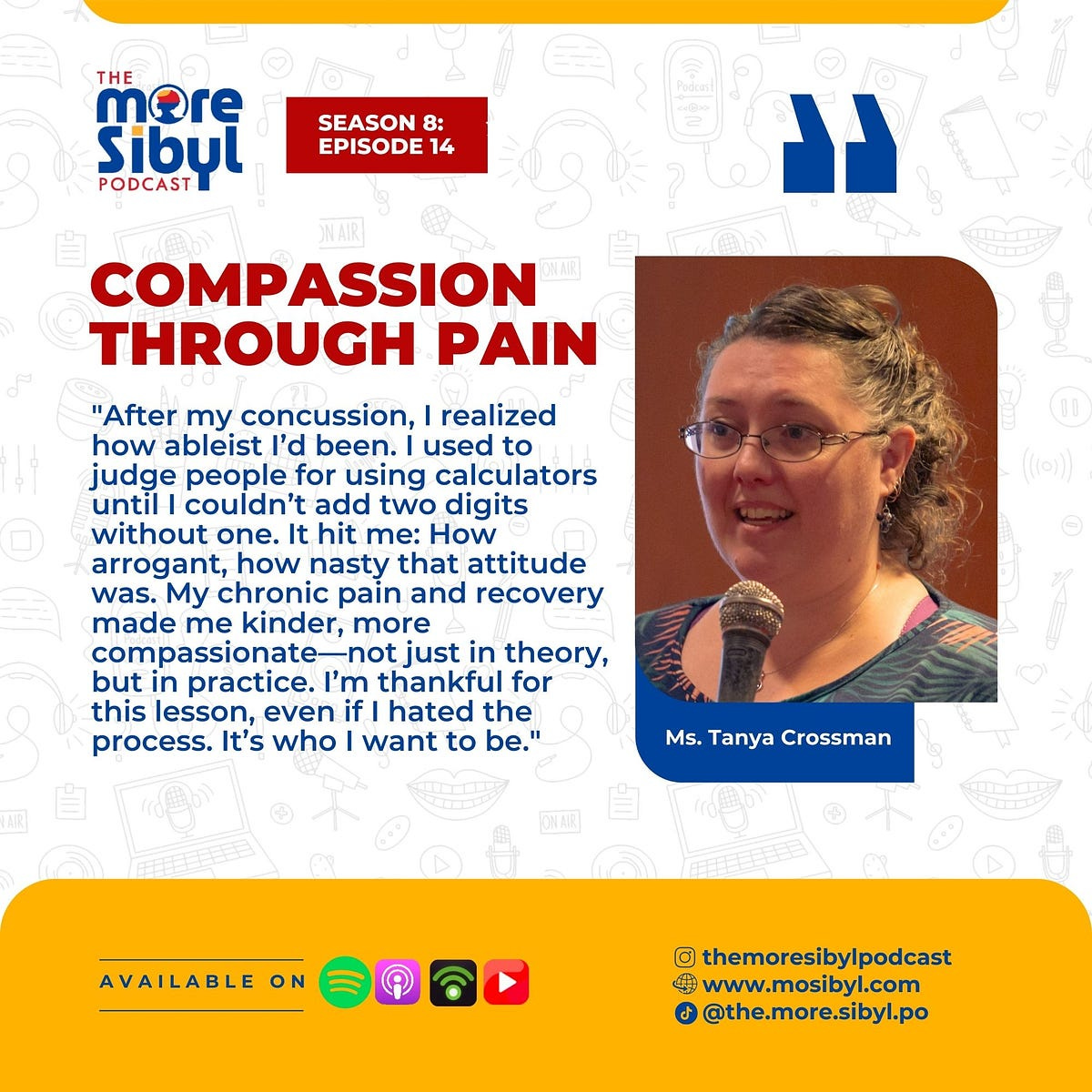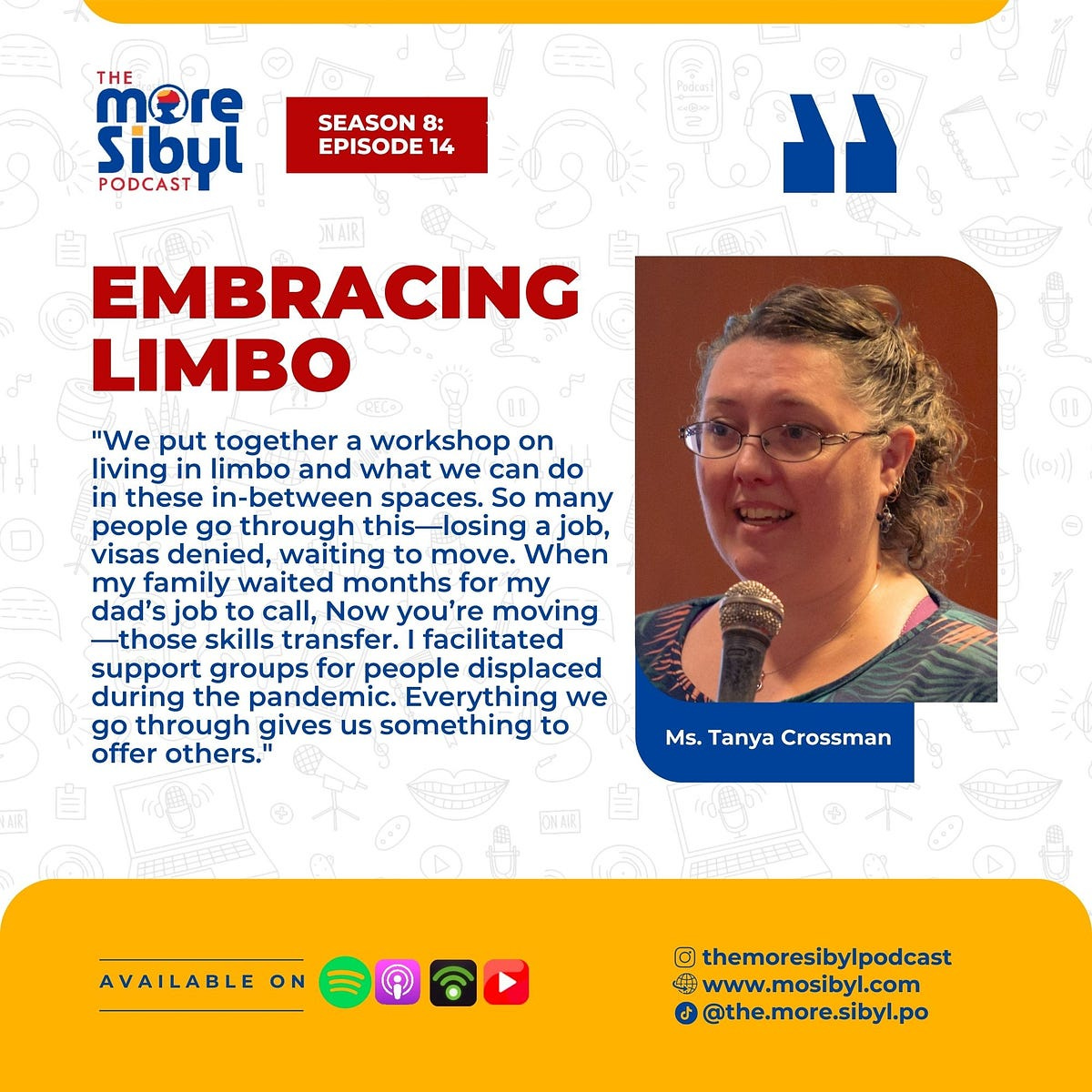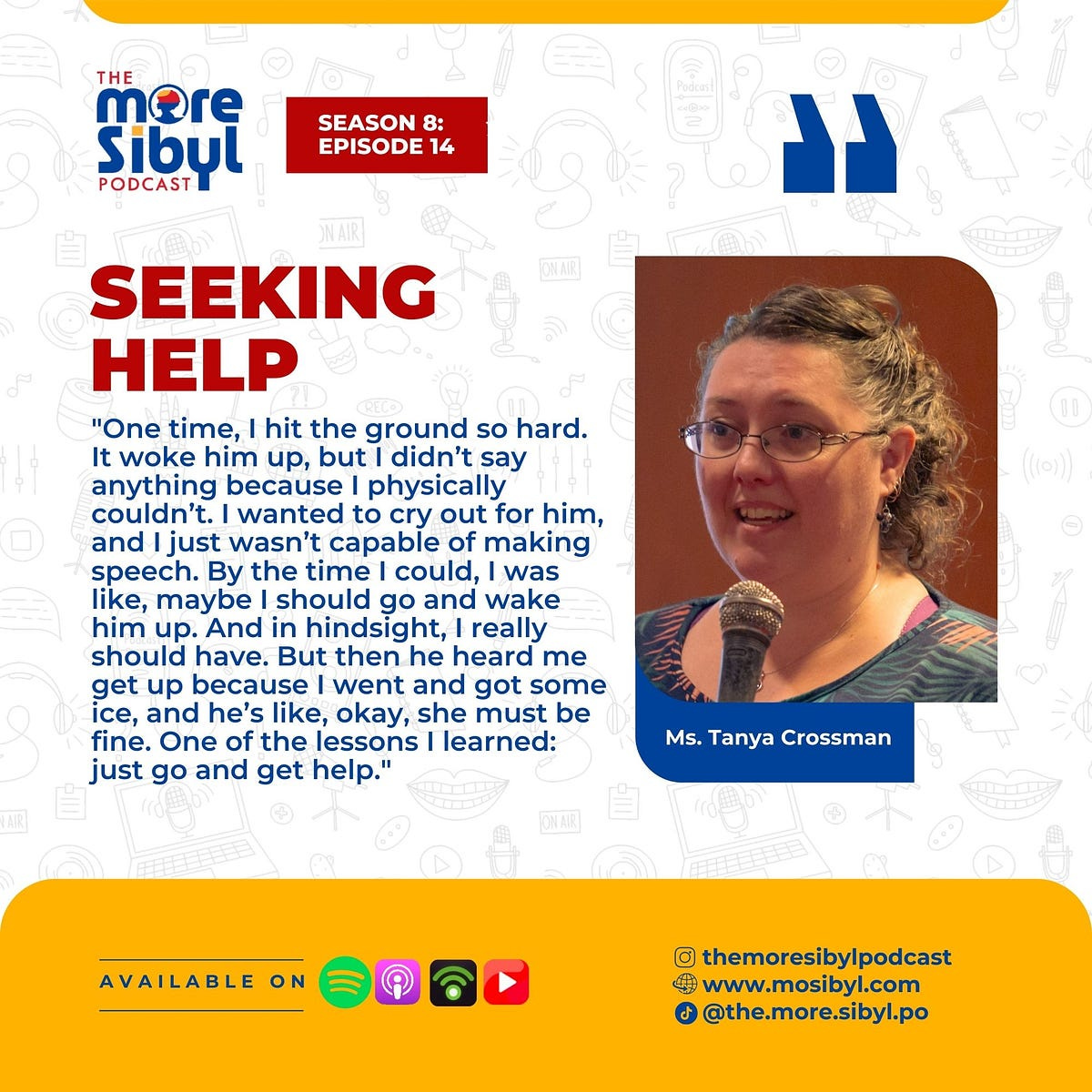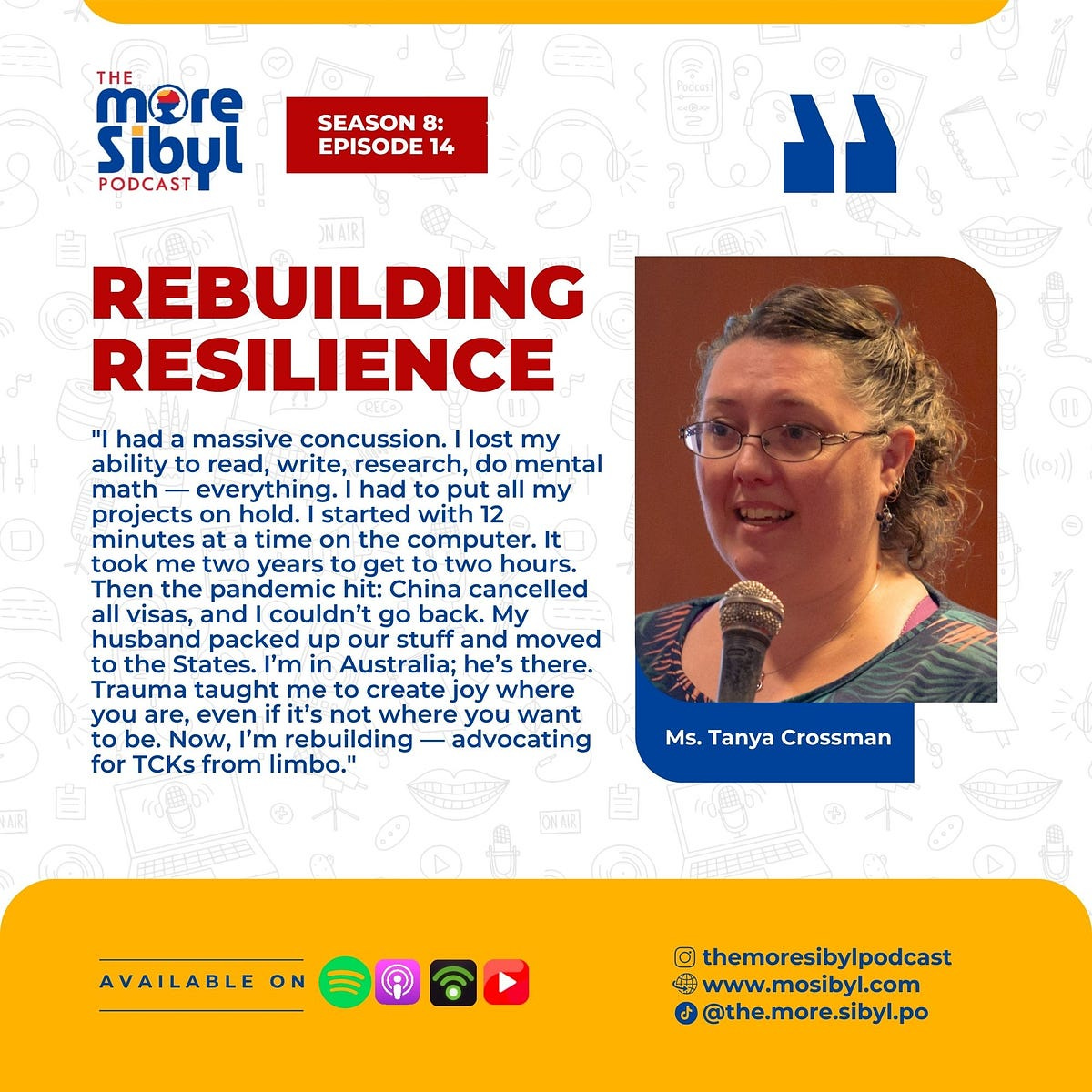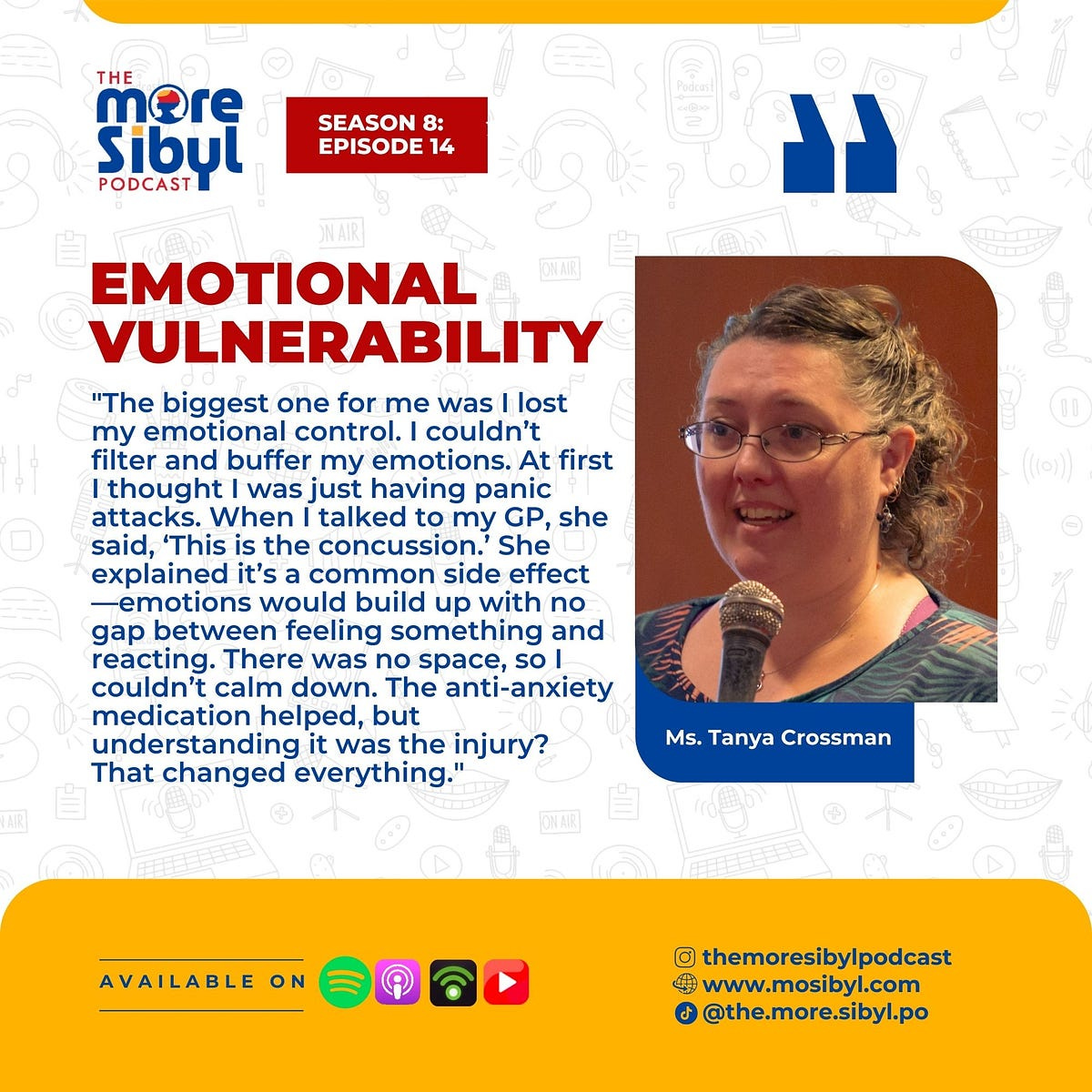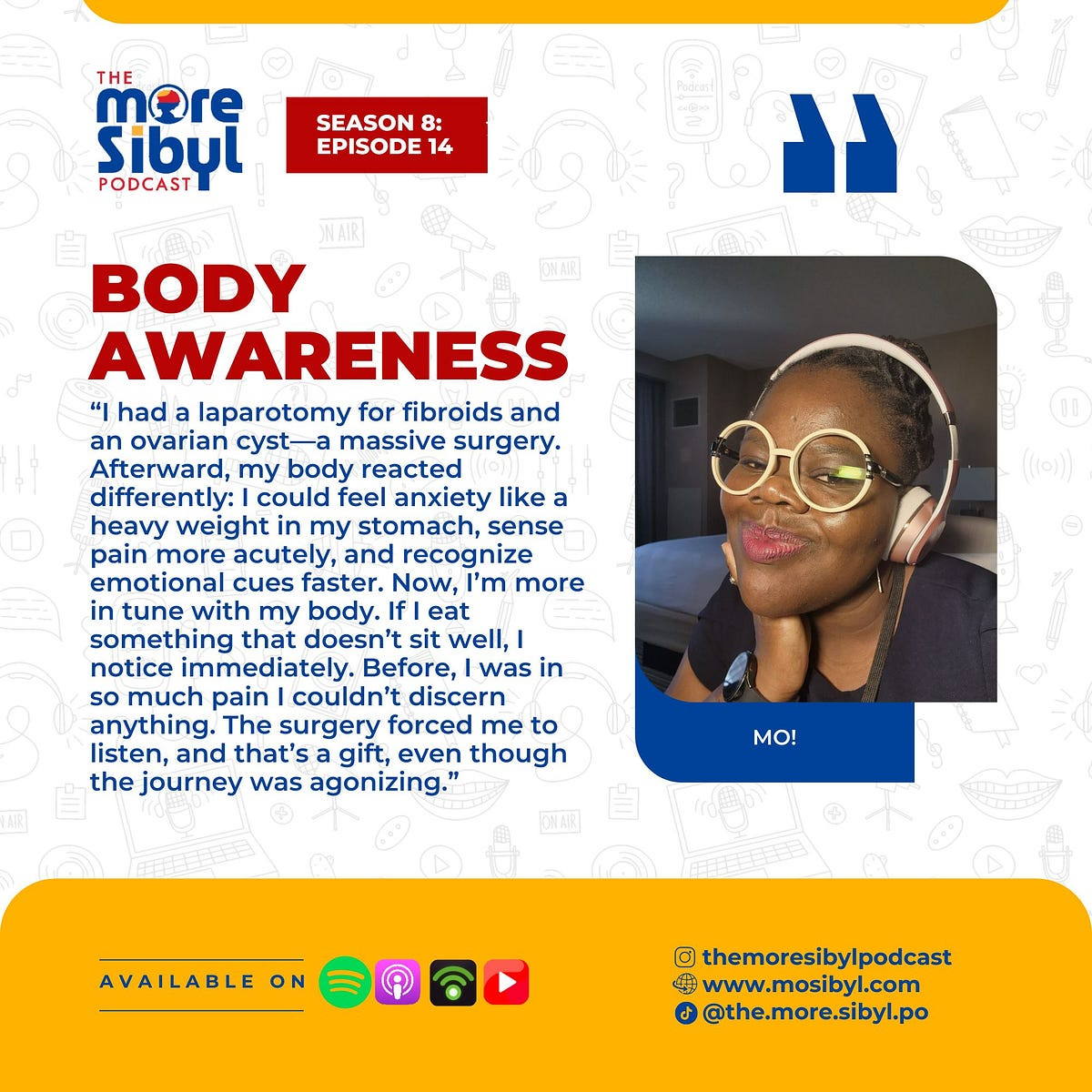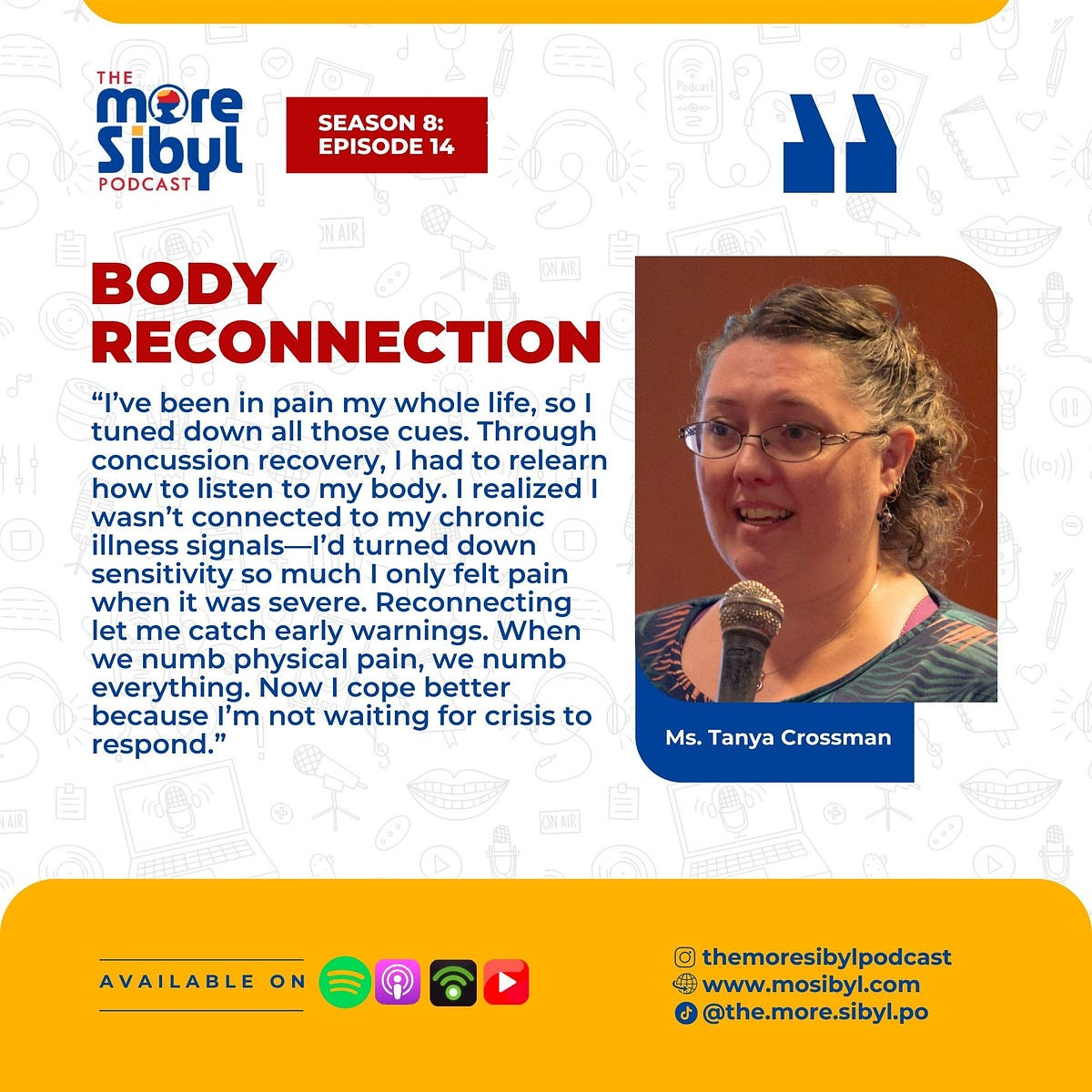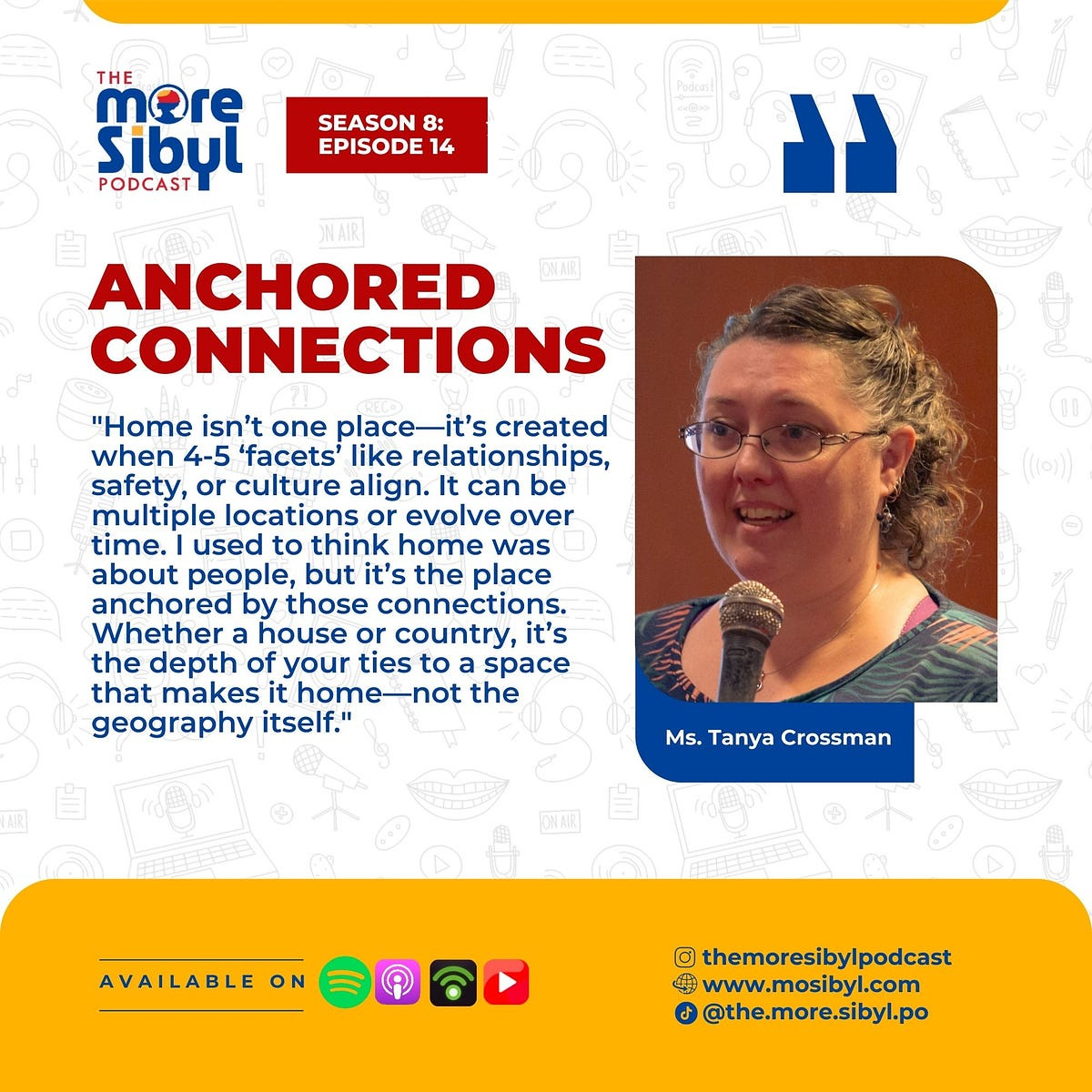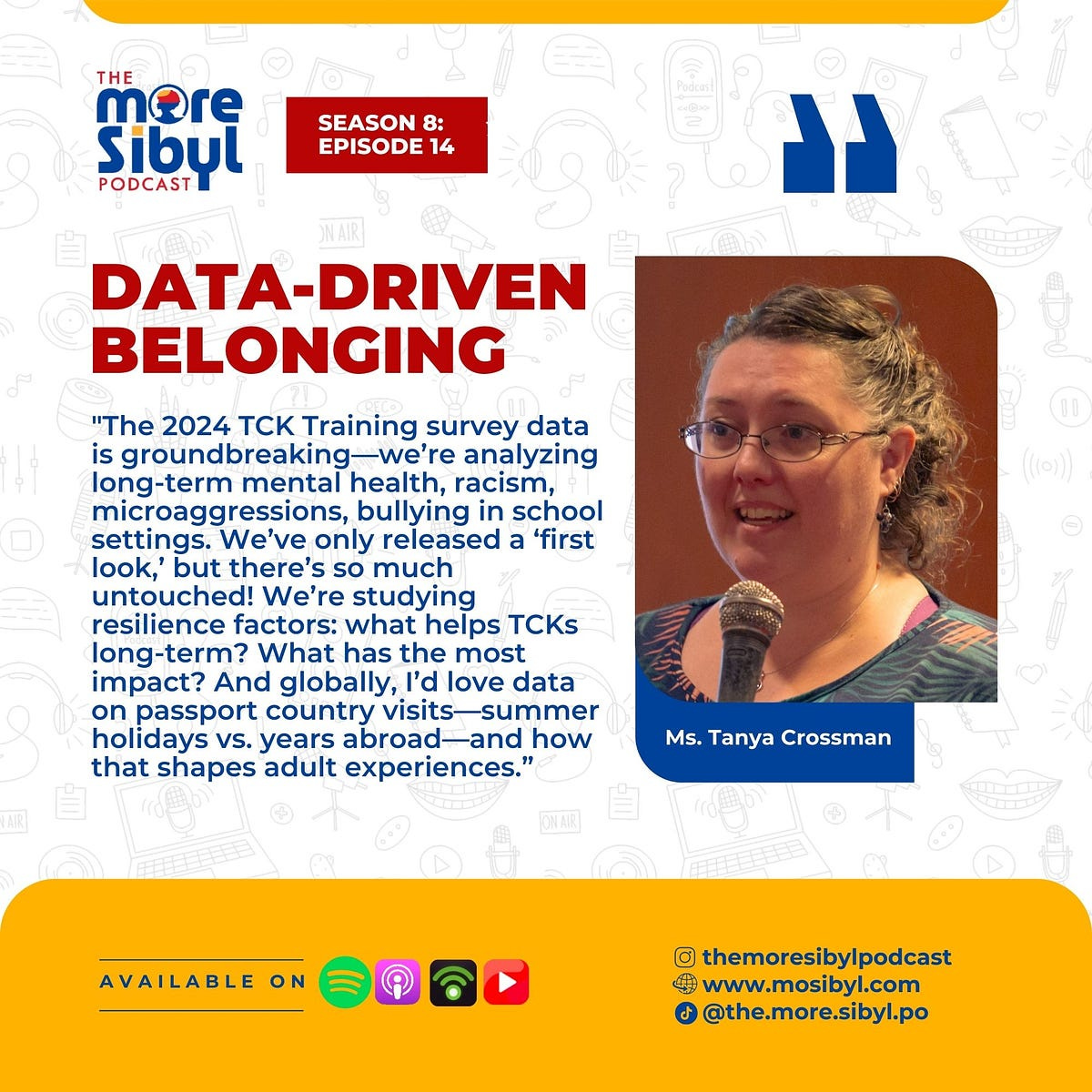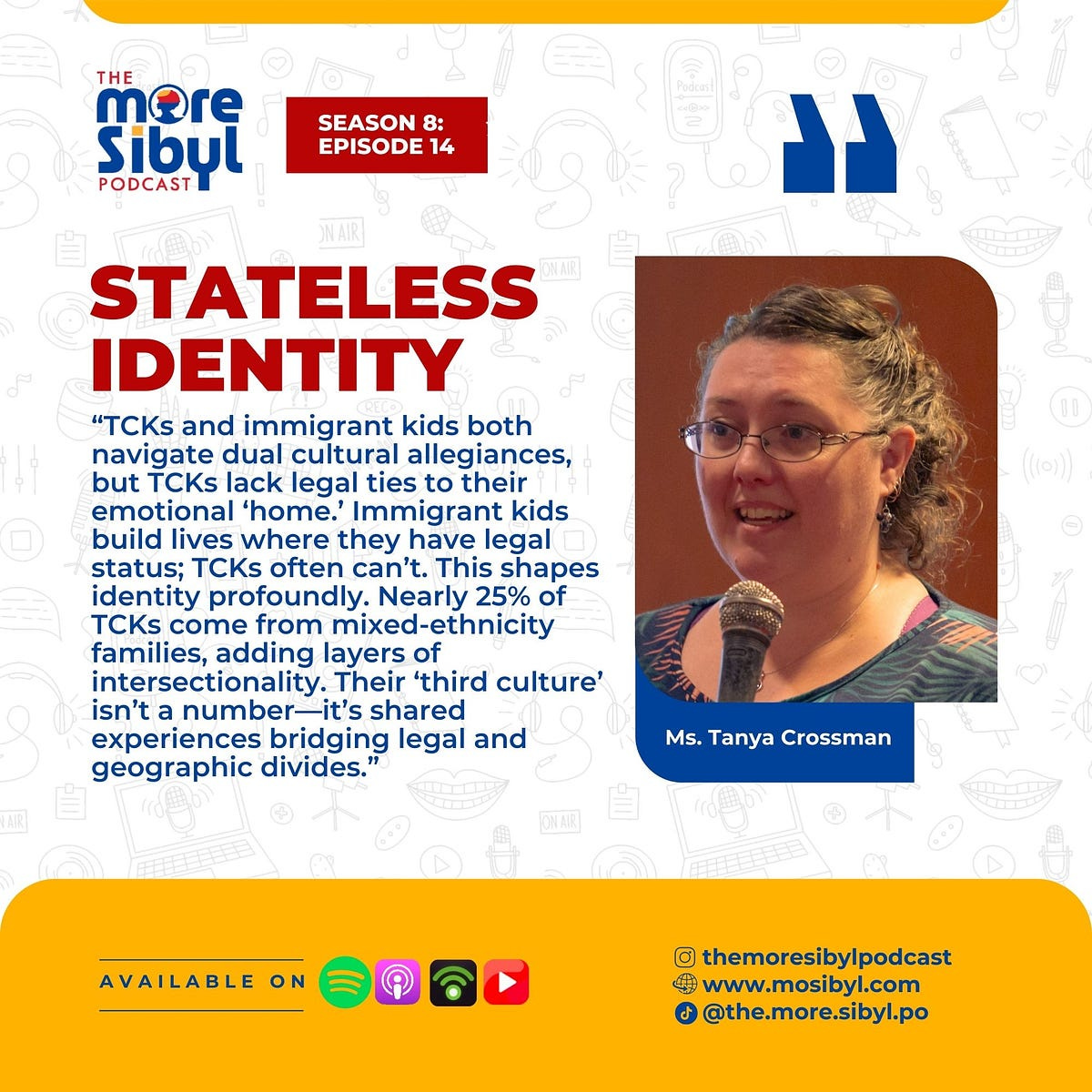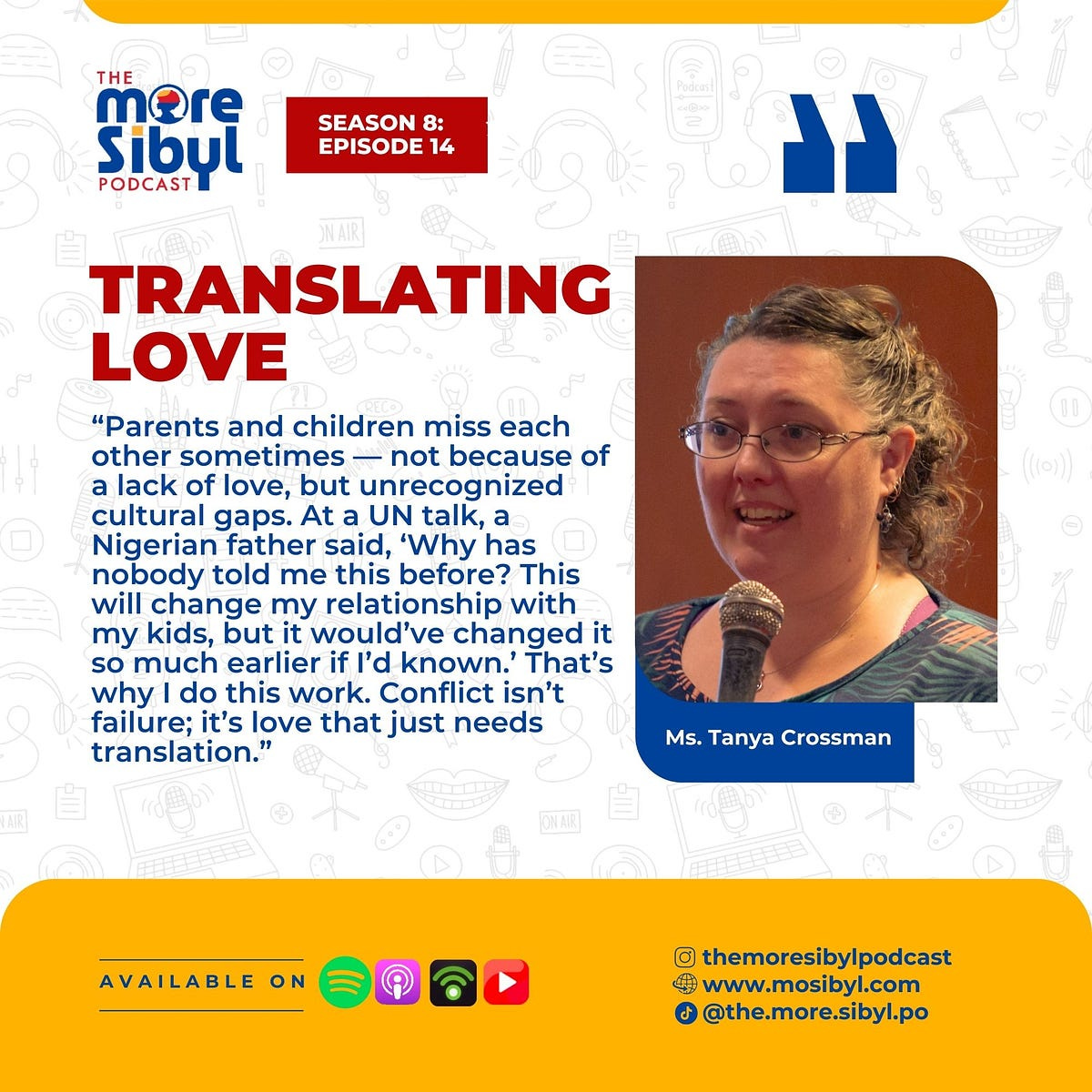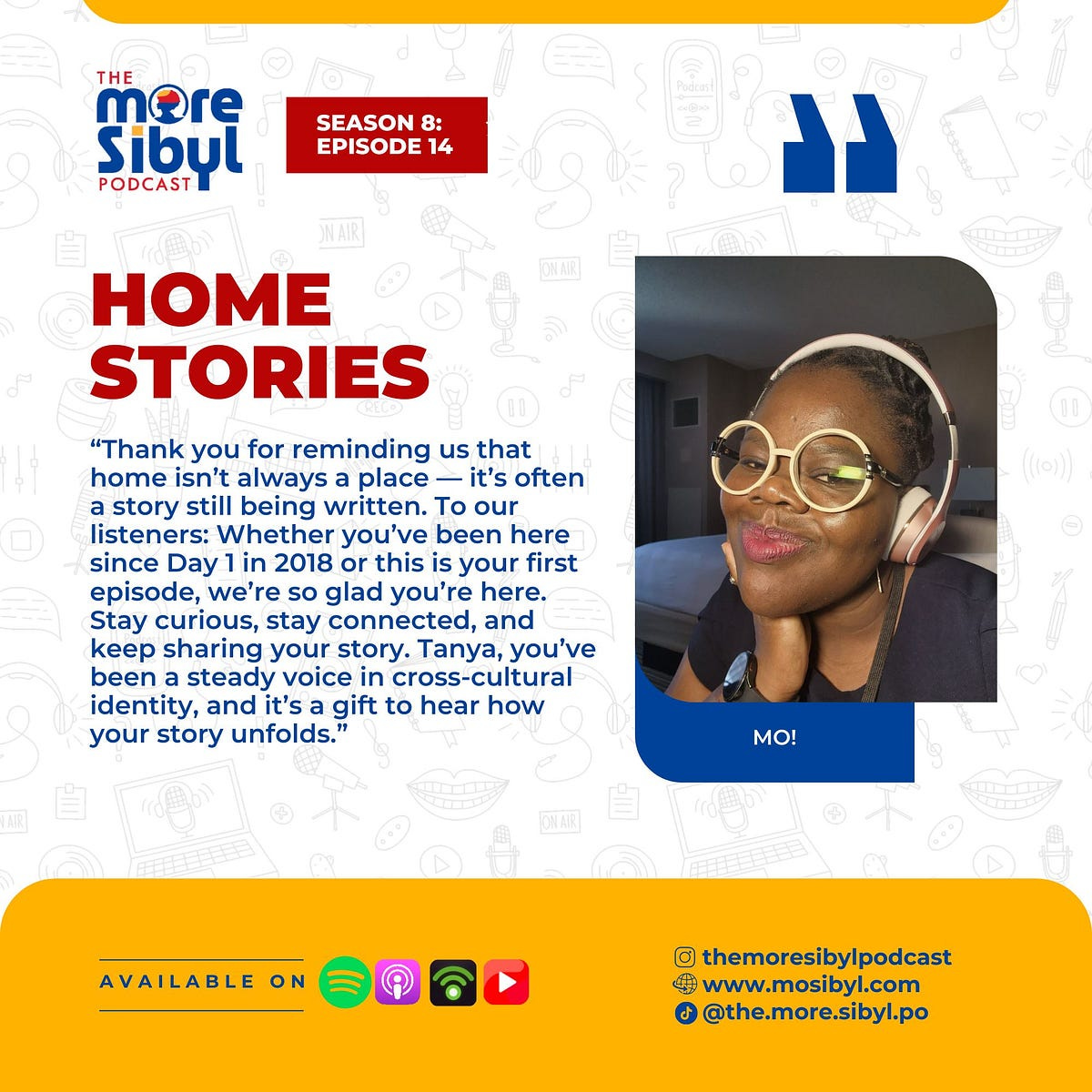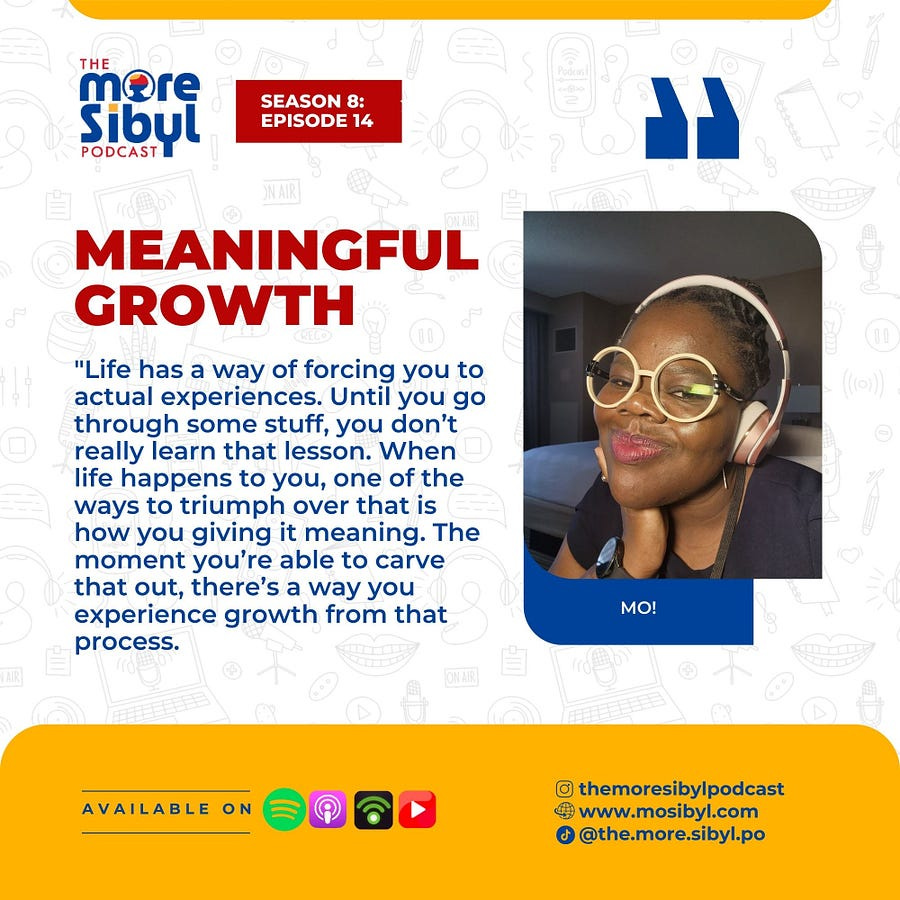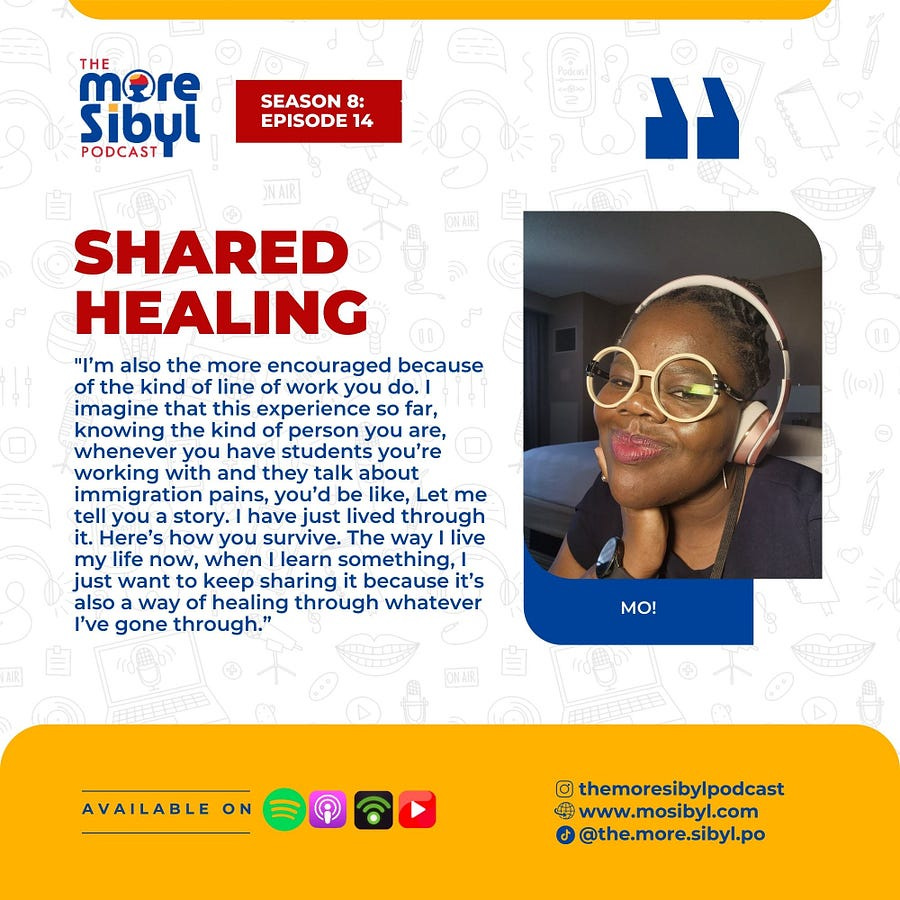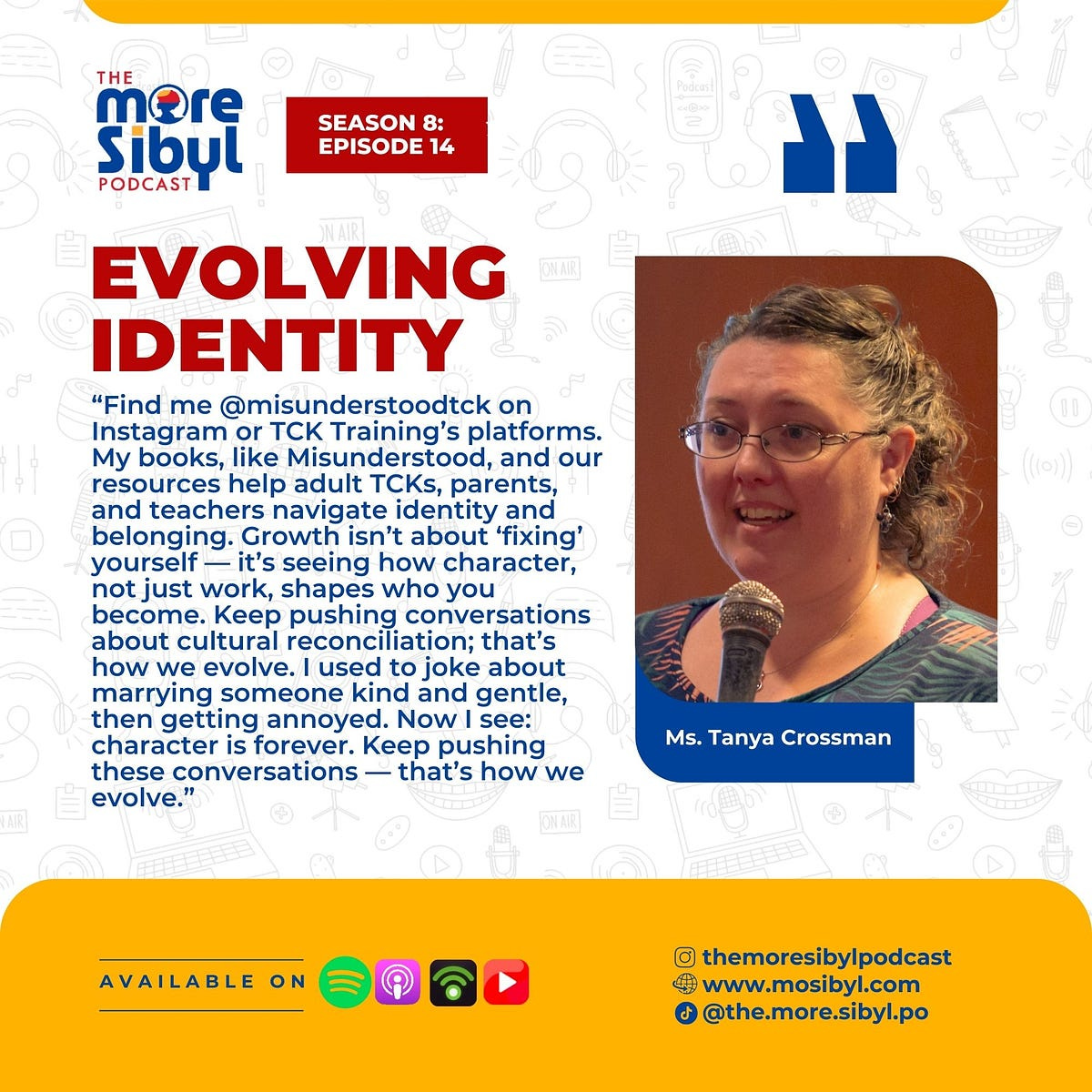On Life Curveballs & Crossing Cultures
경계의 아이들| An Astonishing Reunion with Tanya Crossman| Episode 14 (2025)
“I had a massive concussion. I lost my ability to read, write, research, do mental math — everything. I had to put all my projects on hold. I started with 12 minutes at a time on the computer. It took me two years to get to two hours. Then the pandemic hit: China cancelled all visas, and I couldn’t go back. My husband packed up our stuff and moved to the States. I’m in Australia; he’s there. Trauma taught me to create joy where you are, even if it’s not where you want to be. Now, I’m rebuilding — advocating for TCKs from limbo.” — (2025)
What a Month It’s Been!
I hope you’ve found inspiration in hearing from the voices of past guests who helped shape this show and seeing where life has taken them. One theme stood out through it all: growth. It was powerful to witness how much everyone has changed, myself included.
As the church folks say, “If this is your first time, welcome!” Today’s episode marks the end of our special reunion series, where I’ve been reconnecting with the voices that helped build this podcast.
For our grand finale, I’m joined by Ms. Tanya Crossman. Tanya is the definition of a cultural nomad. Born in Australia, she moved to the U.S., then to China, where she spent 11 years in Beijing. She mentored Third Culture Kids — young people living between worlds — and helped others understand their unique experiences.
She speaks from the heart, backed by research and real-life stories. So — where is she now? What has changed? What has stayed the same? And what unexpected lessons has she learned along the way?
If you’ve ever struggled with the idea of home, belonging, or identity across borders, this episode is for you.
When Winter Came: From Personal Crisis to Purposeful Impact
It’s been seven years since Tanya first appeared on the show in “Third Culture Aussie in China,” so I needed to catch up. When I asked her what had changed since then, I wasn’t prepared for the avalanche of transformation she shared.
Her world had been completely turned upside down, beginning with a severe asthma diagnosis that landed her in a Chinese hospital, followed just months later by a traumatic concussion. One slip on her bedroom floor stripped her of basic mental functions like reading, writing, and even doing simple math. The long-term effects were brutal: nerve damage, cognitive impairment, and nearly two years of recovery to regain basic abilities.
With her writing and research work sidelined, Tanya leaned into what she could still do — presenting. She began traveling to international schools, including South Korea (a personal favorite of mine!), to teach about third culture kids (TCKs). Just as her career was taking off again, the pandemic hit. While on a trip through Southeast Asia, China closed its borders and canceled all visas. Tanya found herself locked out of the country and separated from her husband, who remained in Beijing. What followed was an extended limbo: her husband relocated to the US, she returned to Australia, and even years later, they’re still waiting on immigration paperwork.
Tanya didn’t sugarcoat the emotional toll. She shared openly about getting on a mental health plan, seeking therapy, and going on medication to cope. What anchored her during that turbulent time was becoming “Auntie Tanya” to her nephews — learning to find small pockets of joy, even when life wasn’t going according to plan.
Then came a lifeline: Lauren Wells, founder of TCK Training, reached out at just the right moment. Tanya joined their team and now leads the research and international education departments. She’s not just back on her feet — she’s thriving. Seeing her today, flourishing and creating a meaningful, global impact, left me in awe. What a journey it’s been. Truly, winter came, but Tanya weathered the storm and came out stronger.
Lessons from Limbo: Turning Personal Trials into Collective Wisdom
After all Tanya had endured — from health crises to pandemic separations — I was struck by how she continues to use those experiences as a platform to serve others. Despite the wait to be reunited with her husband, she didn’t let that waiting time go to waste. She talked about using the very tension of “living in limbo” as a resource for others navigating their own uncertain spaces — whether it’s immigration, job loss, or an international move that’s in the works but not yet official. She and a colleague even built a workshop around it. And she’s facilitated support groups for others displaced from China and Hong Kong during the pandemic. In her words, “everything we go through gives us something we can offer to others.” Tanya didn’t just survive; she is sharing, healing, and uplifting through her transparency. I could relate to that transparency. There’s nothing wrong with not wanting to share, but for me, sharing my story has brought healing even to myself.
Becoming Someone New: How Illness and Recovery Reshaped Tanya’s Values
I don’t think a person can go through the life experiences Tanya had and not come out even a little different on the other side. Apart from the shock of her and her husband living separately for so long, she shared the joy she’s found in relationships and roles she never imagined back then, like being an in-person aunt to her niece and nephews in Australia and or having such close professional ties with her colleagues at TCK Training, despite living in different countries. That working bond, she said, has brought immense joy and personal growth.
She’s also evolved as a writer and researcher in ways that her past self probably wouldn’t believe. While she doesn’t blog much anymore, she’s heavily involved in research, has published another book, and is writing a third. She even facilitates writing groups for other third-culture kids. The researcher-writer part of her life has become integral, and now she’s in a place where she helps others explore and express their own stories.
Recovering from the concussion made her realize the importance of her health. Tanya often lived pushing through despite the toll it took on her body. But the concussion forced a reckoning. She began to realize how not caring for herself affected not only her well-being but her husband’s, too. Since then, she’s learned to tune into her body and care for it with a new intentionality.
One of the most moving parts of our conversation was when she talked about her friend who developed epilepsy after pregnancy, experiencing grand mal seizures that took away her ability to drive for years. Once quick-witted and sharp, both of them grappled with the reality of mental fog and diminished capacity. Tanya told me how even after nearly two years into her concussion recovery, she still couldn’t confidently add a two-digit number and a one-digit number without checking a calculator. It struck her deeply how they both used to look down on people who used calculators, not realizing how ableist and arrogant that attitude had been.
Going through that brought a seismic shift. Tanya said they both came to see how their challenges had stripped away hidden biases and made them more compassionate, not just in theory but in how they live. Their limitations had shaped them into people they’re proud to be — kinder, humbler, more empathetic toward struggling others.
Tanya put it beautifully: her expectations for herself and others have shifted. Her ability to extend compassion is no longer abstract; it’s embodied. And while she wouldn’t have chosen the path that led her here, she’s grateful for the person she’s becoming because of it.
Learning to Listen to My Body Again
You know your girl always gets curious about everything, so here was my next question: “What does a concussion feel like?” She said it was like feeling her brain bounce inside her skull — an entirely different pain from anything she’d experienced in her 35 years of living with migraines. It hurt so badly that she physically couldn’t speak. She shared how her husband, sleeping behind two closed doors, woke up from the impact when she hit the ground, but she couldn’t even call out to him. Eventually, she got up for ice, which signaled to him that she must be okay, but in hindsight, she knew she should have gone to get help. From that experience, she learned the importance of always asking for help. That incident marked the beginning of a long and delicate recovery, and Tanya had to learn an entirely new way of relating to her body. She explained that overdoing any mental activity came with clear stages: a light pressure at the impact site near her temple, then numbness, then pain, and eventually a blinding headache that would put her in bed for days. It became essential to catch those early cues because they were the only warning signs she had. Even something as simple as walking — going from five to ten minutes — could cost her a full day in bed. That was the level of sensitivity she was dealing with.
Some of the most helpful advice came from friends who had gone through similar experiences. One piece that stuck with her was this: “Your brain is what is injured, so you cannot trust yourself right now.” That really hit both of us in the conversation. Realizing that the very part of you that tells you what’s real, what’s okay, and what you need, is the one thing that’s compromised.
Tanya shared some bizarre and difficult symptoms. One was losing her ability to regulate temperature — she’d randomly spike fevers that only lasted an hour or so, not from being sick, but because her brain had lost control over that function. But the hardest part was the loss of emotional regulation. She initially thought she was having anxiety or panic attacks. Eventually, her doctor recognized it as a common post-concussion symptom and prescribed a low-dose anxiety medication known to help with this exact scenario. The difference was immediate and life-changing.
She could literally see her brain recovering over those two months. And while the physical and mental toll was immense, Tanya leaned into what she could do. Her husband helped in simple, profound ways — asking if she’d eaten, if she needed to stay home, just helping her check in with herself. He got her an Audible subscription to enjoy stories again, even though she couldn’t read. Cooking became a slow, grounding practice for her, one she’d never done with such attention before. She’d sit, cook a little, and then sit again, eventually finding a manageable and fulfilling rhythm.
She emphasized the importance of being gracious with herself — resting without guilt, sleeping a lot, and honoring what her body needed. That shift toward vulnerability and self-compassion changed her. She said, “I’m a different person in a really good way.” Her job at TCK Training supported that change, giving her the space to say, “My brain needs a break,” and being met with full support and care. When she hit a limit, her team helped redistribute the work. That culture of psychological safety didn’t just help her heal — it modeled how to live well going forward.
Our conversation eventually touched on the way pain makes us tune everything else out. I shared my own experience recovering from major surgery and how that process reconnected me with my body in a more attuned way. Tanya resonated immediately. She’d been in pain her whole life and had gotten used to tuning everything down — not just pain, but other sensations too. Her concussion forced her to relearn how to listen to her body again, and through that, she discovered deeper layers of both her chronic illness and her emotional life that had been dulled for so long.
That, to me, was one of the most powerful takeaways: when we numb pain, we often numb joy too. Recovery, in this case, wasn’t just about physical healing — it was about reconnecting with her full range of human experience.
Rethinking “Third Culture”: The Layers Beneath the Label
Then Tanya and I dove into her work with Third Culture Kids (TCKs). She’s been working with TCKs for twenty years, and that depth of experience came through instantly.
For anyone unfamiliar, a TCK spends a significant part of their formative years in a culture different from their passport country. But Tanya quickly pointed out that “TCK” is just one piece of a much bigger puzzle. It fits under a broader category: cross-cultural kids. And these kids can wear multiple labels — TCK, bicultural, biracial, children of immigrants — sometimes all at once.
While most people describe the “three cultures” as the parents’ culture, the host culture, and a kind of blended third identity the child creates, Tanya takes a different and more precise approach. She frames it as three types of culture: legal, geographic, and relational. First culture is legal — your passport country, the nation that officially claims you. Second is geographic — all the places you’ve lived and experienced firsthand. Third is the shared experience culture — people who’ve lived in that in-between space of legal identity not matching emotional belonging. That subtle difference changes everything. It accounts for the fact that many TCKs have lived in more than three cultures — 40% of the kids she interviewed for her book, Misunderstood, lived in four or more countries. Ten percent had lived in six or more.
And it’s not just about places. Tanya shared that 25% of the TCKs in her large-scale surveys, nearly 2,000 people, came from mixed-ethnic families. These kids weren’t just juggling external cultural environments but also multiple cultural identities within their households — different ethnicities, different languages, different worldviews — before even stepping outside the front door.
One of the most powerful distinctions Tanya drew was between TCKs and immigrant kids. They often feel the same tension between their parents’ background and the culture they’re growing up in. But there’s a key difference. For immigrant kids, the culture they’re emotionally connecting to is also their legal home. They belong on paper and in practice. For TCKs, that’s flipped. They may be forming deep emotional bonds in a country where they don’t hold legal status, while their actual passport ties them to a place they might barely know. That mismatch between emotional and legal connection is where much of the classic TCK experience lives.
Listening to Tanya unpack all of this made me realize how much nuance we miss when we rely on simplified definitions. Culture isn’t just a place you live or a language you speak — it’s layers of connection, identity, and experience that don’t always align neatly.
Rethinking Labels: The Complexities of Identity in a Globalized World
When I asked Tanya about how the TCK and expat communities have shifted in recent years, especially with the rise of global nomadism, TikTok storytelling, and self-declared global citizens, her answer cut straight to the heart of the limitations and implications of the language we use.
She pointed out that even the word expat is loaded. On paper, it refers to anyone living outside their country of origin, but in practice, it’s a term steeped in colonial baggage. We often reserve it for people with a certain level of privilege or particular kinds of jobs, while others who fit the definition are labeled migrant workers. As Tanya said, that distinction doesn’t make sense to her, but what she thinks isn’t the point. The word carries cultural weight, and ignoring that doesn’t make it disappear.
The same complexity applies to the term TCK. There’s an ongoing conversation about whether we should broaden the term to include more people. But Tanya doesn’t think that’s the answer. Instead, she prefers the framework of CCK — cross-cultural kids — a term developed by Ruth Van Reken, because it allows for more nuance. If we lump everyone under TCK, she explained, we risk erasing the vast diversity of experiences within that category.
She used herself and her husband as an example. They’re both TCKs, sure — but his experience includes being bicultural, biracial, and the child of an immigrant. That’s four cross-cultural layers compared to her one. Calling them both simply TCKs flattens those differences and erases essential parts of identity and experience.
This is why Tanya leans into intersectionality in her work. In her book Misunderstood, she dedicated sections to exploring TCKs who are also immigrant kids, bicultural, biracial, or internationally adopted. Those layered identities aren’t footnotes — they’re central. Ignoring them means missing crucial aspects of how these kids see themselves and the world.
What really stayed with me was her reminder that, globally, most people have had some cross-cultural experience in childhood. That means there’s often more shared emotional ground than we realize. Tanya calls this a way to push back against the “terminal uniqueness” that many TCKs feel — that belief that no one else could understand. When we open up to various experiences around us, we find connection in the overlaps.
And even though there are no easy answers — no perfect terms or catch-all categories — Tanya emphasized the value of simply having the conversation. If the word TCK helps someone make sense of their story, by all means, use it. But let’s not lose sight of the whole picture in the process.
Redefining Home: The Five Facets That Shape Where We Belong
As we began wrapping up our conversation, I circled back to a topic that sparked a lot of reflection during Tanya’s first appearance on the podcast: the meaning of home. Back then, we dove into the themes of homesickness and the constant search for a sense of belonging, especially in the context of third culture and cross-cultural lives. So naturally, I was curious — has her definition of home evolved since then?
Tanya didn’t hesitate. It has changed, she told me, and much of that shift came through her continued research, especially in conversations with adult TCKs and CCKs. Through that process, she developed a framework she now uses to better understand how we experience home — a concept she calls the facets of home.
She outlined five distinct facets that, together, create a sense of home. What struck me was the simplicity of the insight: it only takes four or five of these facets for a place to feel like home. And as those elements shift or disappear, a place that once felt like home can stop feeling that way. Just like that, home can change.
For Tanya, this realization reshaped how she thinks about home — not as a fixed place or a simple connection to people, but as something created. She explained that a place becomes home when we form meaningful connections to it. Those connections might be to people, but also to the place itself — whether it’s your apartment, city, or country. And importantly, home can exist in more than one place simultaneously.
She noted that in the past, she believed home was mainly about the people. But now, she sees it differently. While connections to people are still crucial, the connection to the place, at any scale, anchors our sense of home. Those evolving relationships — with people and spaces — truly define where we feel we belong.
What Tanya’s Building Next
Tanya’s got a full slate of meaningful projects in motion. She’s currently finishing the first in a new series of short, practical books for adult cross-cultural kids. Originally envisioned as a single guidebook, the project evolved into a series with reflection questions and concise chapters. The first book, Roots Without Fear, explores themes of change and home, and she hopes to release it within the year.
Beyond that, she’s collaborating on several other books: one on identity integration, another on race and privilege in cross-cultural contexts — especially the contrast between being a privileged minority versus an oppressed one. Some of these are long-term ideas she’s been developing with collaborators like Dan Altano.
In her words, “I always have a million projects. It’s just a question of which one comes first.”
What We Still Need to Talk About
When I asked Tanya what conversations still need to happen in the TCK space, she lit up with excitement about the data TCK Training collected in 2024. She’s deep into the process of analyzing it, and even though they’ve already released some early findings, there’s so much more left to uncover.
Tanya shared that they’ve gathered rich data on experiences with microaggressions, racism, bullying, and other school and community-related challenges faced by TCKs. She hasn’t even started digging into some of it yet, but is eager to see what patterns and insights emerge. At the same time, she’s working on identifying preventive care and resilience factors, trying to understand what helps TCKs thrive over time.
One topic she’s particularly curious to explore further is the role of time spent in a TCK’s passport country during childhood. What difference does it make to return just for summer holidays versus staying for a year here and there, or doing something like a three-year-in, three-year-out rotation? She wants to understand how those varied experiences influence TCKs' feelings about their passport country as adults. It’s a question she gets often, and the current data might hold the beginning of some answers.
I loved hearing how deeply committed she is to this work, not just in theory, but in practice, driven by data and constant collaboration with researchers worldwide.
Reassessing Home: Tanya’s Evolving Relationship with China
Tanya’s relationship with China, once her home for 13 years, has changed. While China shaped so much of her life, she and her husband, who lived there from age 12 until his late 30s, no longer see it as a place they could return to permanently. The current visa system, which only allows for one-year terms, makes long-term stability nearly impossible. But beyond logistics, Tanya admitted there’s still unresolved trauma from how they had to leave.
Working on her new book about change and home gave her a surprising insight. She created a chart mapping the “facets of home” for different places she’s lived, including Beijing. That process made her realize how much had changed — she no longer feels safe, accepted, or rooted in the community there. Most of the people she knew are gone, and the sense of familiarity has faded.
It was a cathartic moment. She said she accidentally ends up teaching herself through her own writing, finding healing and clarity in the same lessons she shares with others.
A Message in a Bottle: Words for Her Future Self
As we neared the end of our conversation, I asked Tanya what message she’d want to leave for her future self, especially if she ends up listening to this episode years down the line. Her response was poetic and grounded. She said it felt like sending a message in a bottle through time and space, and what she hopes to see most is not just the work she’s done, but the character she’s become. “The work’s exciting, but the character is forever,” she said — words that hit deep.
What was supposed to be a note to her future self ended up resonating far beyond that. It’s a reminder to all of us that the work we do matters, but who we become in the process matters even more.
Keep Us Talking: The Power of Cross-Cultural Conversations
As we wrapped up the episode, I asked Tanya to leave a word for this podcast, which is now seven years old. Her encouragement was simple but powerful: keep pushing those boundaries, keep making those conversations, and keep us talking about things that we need to talk about. Back when we first spoke, she said I was one of the few voices exploring cultural differences and shifts in perspective. And while the landscape has changed with more people joining the conversation, holding space for these complex discussions still matters deeply.
I had to let Tanya know how much her work has shaped mine. Her passion for this community, especially helping parents navigate generational and cultural gaps with their kids, planted a seed that continues to grow in my approach. I work with a lot of African families, where cultural values run deep and sometimes collide with the lived realities of their children. Tanya helped me understand that co-creating a space where children feel heard doesn’t mean abandoning tradition but adapting with love.
She shared a story that brought this home. During a virtual talk with a branch of the UN, Tanya introduced some TCK concepts. A Nigerian man, who had worked with the UN for 25 years, was visibly moved. He said, “Why has nobody told me this before?” Realizing that this new understanding could change his relationship with his kids — and could’ve done so even earlier — was a moment that reaffirmed why Tanya does what she does. As she put it, these are parents and children who love each other, but sometimes miss each other not because of a lack of love, not because of a lack of care, but just because of an unrecognized cultural difference.
That’s the kind of insight Tanya consistently brings into the world. If this conversation resonated with you, I highly recommend listening to the full episode. You’ll find so much more to reflect on. And if you’d like to stay connected with Tanya or explore more of her work, head over to her Instagram — she’s doing incredible things worth following.
Until next time, Mosiblings!
🅻🅸🅽🅺🆂:
Download: https://mcdn.podbean.com/mf/web/qu36c4z458yp5qwr/CROSSMAN2025.mp3
Or on the website: www.mosibyl.com
Tanya’s First Episode: https://www.mosibyl.com/podcast/tanya18
Misunderstood by Tanya Crossman: https://www.amazon.com/Misunderstood-impact-growing-overseas-century/dp/1909193852
Tanya’s Socials: https://www.instagram.com/misunderstoodtck




